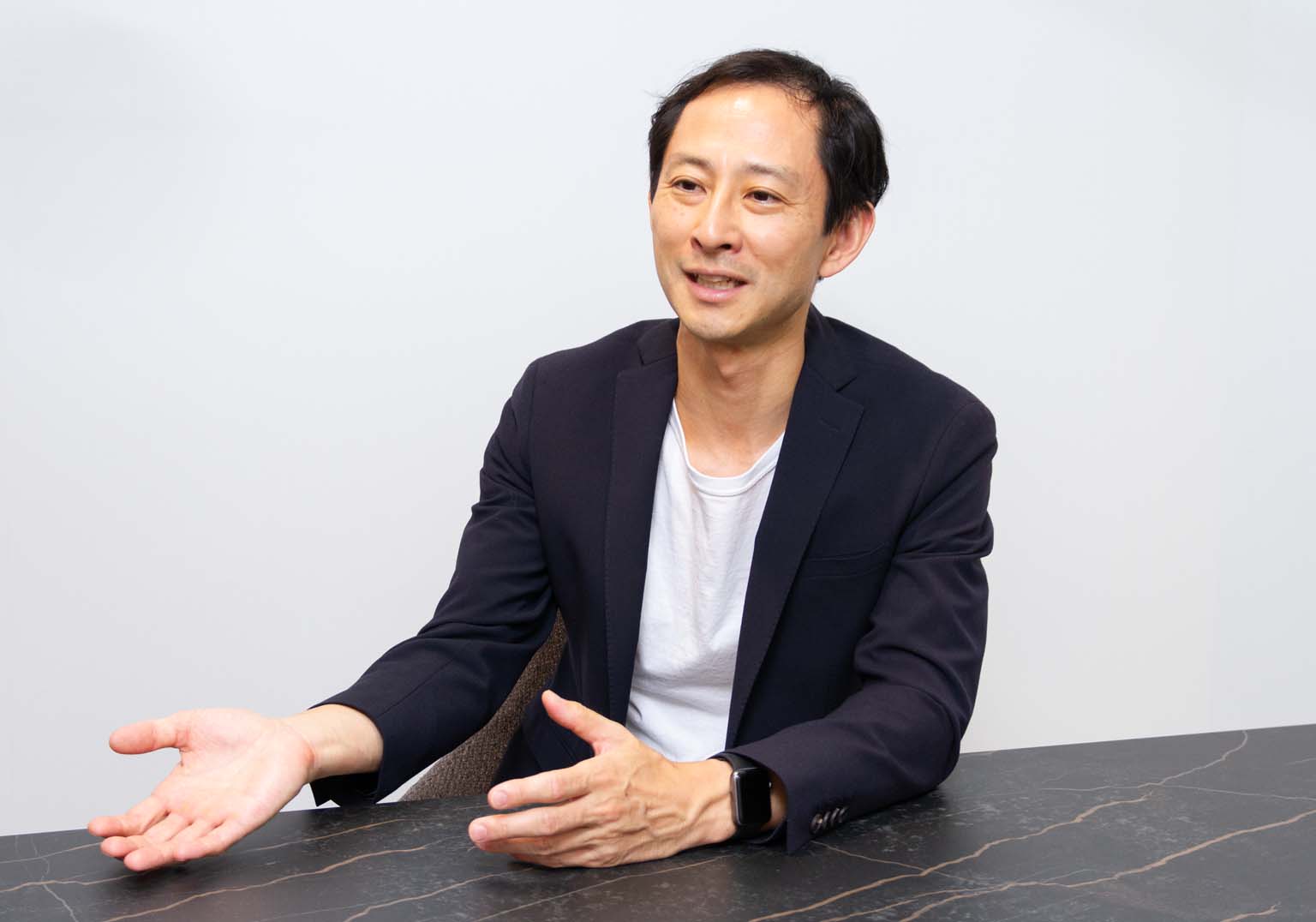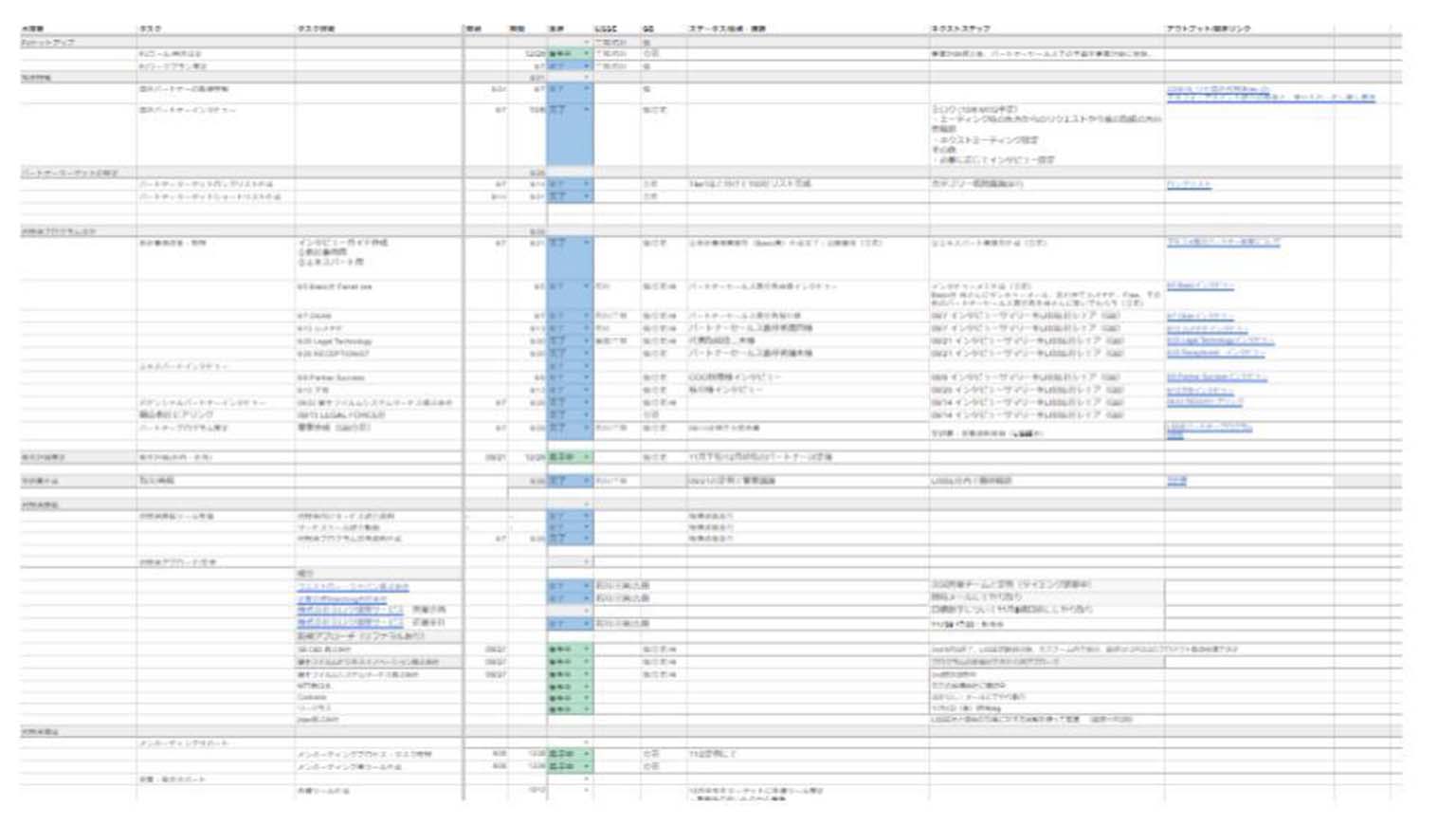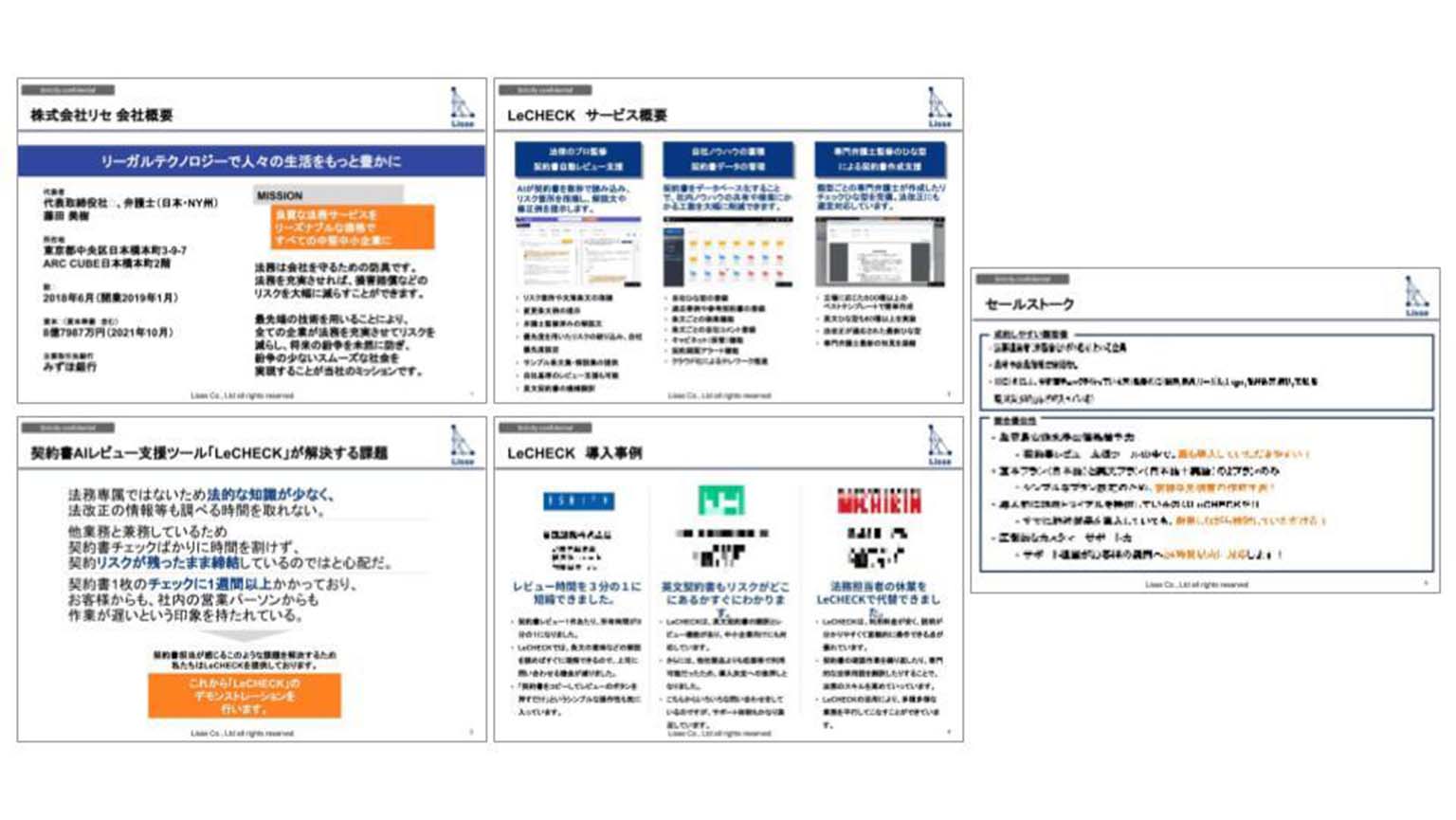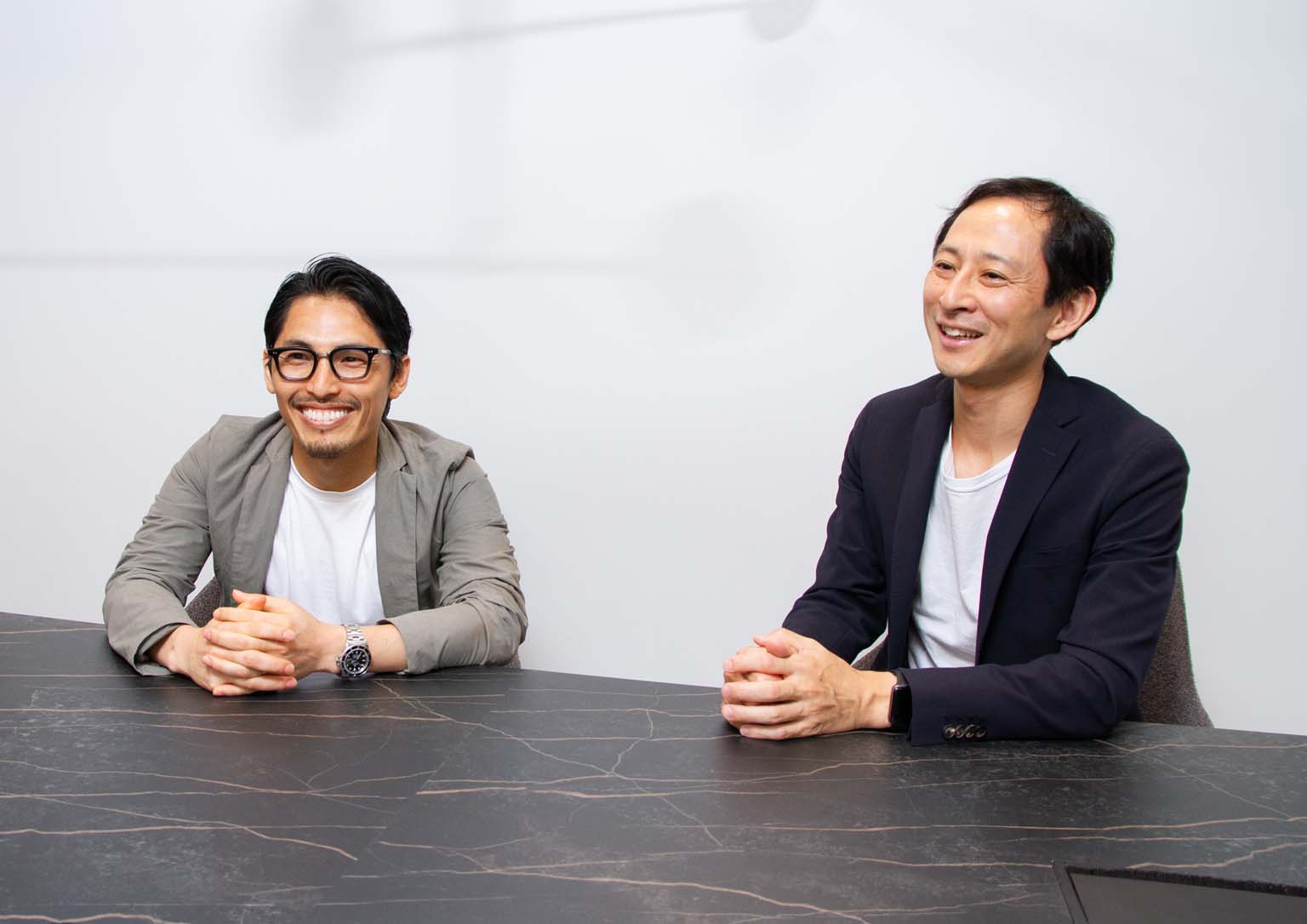The Next Step After PMF for SaaS - Lisse’s Experience of Launching Partner Sales
No one at Lisse had partner sales experience. We asked how they launched the new structure from scratch.

Written by the Universe editorial team.
Lisse Co., Ltd. offers multiple legal tech services including “LeCHECK,” which streamlines contract review with AI. After they achieved stable revenue through direct sales, the company embarked on partner sales to further expand their reach.
Lisse attained their partner sales target in about six months after kickoff, despite having no member with partner sales experience in the team. How did they get it on track? We sat down with Masato Sannomiya, attorney and head of corporate planning at Lisse, and with Global Brain (GB)’s Kazumo Tachibana who supported the initiative.
How it all began from scratch
When did you start partner sales?
Sannomiya: We decided to try it out last year because we are steadily growing our direct sales revenue and our customer base. I was assigned as the main responsible person. Partner sales is something we actually had in mind from about three years ago, but we prioritized promoting LeCHECK and building a direct sales structure at the beginning. So after all of that was settled, we finally got the ball rolling from last year.
But no one at Lisse, including me, had partner sales experience. So, I would say that things actually started moving after Tachibana-san joined the initiative, bringing his marketing and sales knowledge to support the overall project strategies and detailed actions.

Could you tell us how you moved the project forward?
Tachibana: We started by setting quantitative targets for the initiative. By talking with six to seven SaaS portfolio companies we currently support that have achieved good performance with partner sales, we looked into the revenue they had achieved and how much time was spent.
Given SaaS is a service that came out in the market in the past decade or so, there is no existing knowledge or theory on how to do partner sales for the service, and everyone is looking for a way. To set quantitative targets, I felt the need to refer to other companies’ data. In a way, we were gathering knowledge with all possible means.
Sannomiya: The interviews with startups revealed that many companies “were able to generate 20% of their total revenue through partner sales within two years from launch.” We decided to use this as an indicator.
Tachibana: Once the final goal was set, we fixed milestones we wanted to achieve in one year, one month, and so on, then checked the progress regularly based on our work plans.
Sannomiya: Tachibana-san managed the overall plan for us and also took care of small detailed tasks like compiling a list of about 100 potential partner companies. His commitment was so deep as if he were a Lisse member. I even think I spent more time with Tachibana-san than with my team (laughs).

Carefully planning sales pitches for each partner
I imagine partner sales are different from direct sales in many ways. What are the key points to keep in mind?
Sannomiya: It is to squarely face the partner companies and understand them deeply.
Unlike direct sales, the partner companies we work with have ongoing businesses with various other companies. They therefore prefer to cut down costs as much as possible and focus on actively selling products that customers will actually buy. We have to make companies feel that “Lisse’s LeCHECK is easy to sell,” even if they are selling a product like a copy machine, a product needed by end users and whose value proposition is very easy to understand.
To do so, we need to understand what kind of business models others are adopting, what kind of products they sell, and what their sales styles are. Based on that, we prepared different talking scripts for each partner company to sell LeCHECK.
I see you offered extensive support. What exactly did you do to gain a better understanding of the partner companies?
Tachibana: I joined almost all the meetings Lisse had with their partner companies and also interviewed the partner companies’ responsible persons to understand what products are selling well. After asking them why those products are selling well and what kind of sales pitches they are giving, I incorporated the takeaways into LeCHECK’s sales scripts.

Sannomiya: Getting to know the end users of partner companies was the most important. This is because even if the partner companies do not have direct connections with legal affairs personnels, who are LeCHECK’s main target customers, there is a possibility to close deals depending on how they give the sales pitches.
For example, if a partner company’s end users are information systems or general affairs departments, then we would ask the partner company to reach out to those users saying, “Do you have any challenges working with legal teams?” If users have problems with the legal team’s slow response in reviewing contracts for example, then we would have the chance to introduce LeCHECK. Partner companies have built trust relationships with their end users, so sales will go smoothly by trying to solve the end-users’ challenges instead of urging the partner company to introduce us to legal affairs departments.
How to make it more easier to sell
I understand your support was aimed to simplify sales for partner companies.
Sannomiya: Yes. In that sense, having the partner companies truly understand LeCHECK’s value is another key point.
Partner companies that have handled traditional products for many years are unfamiliar with the term “legal tech.” We therefore prepared onboarding programs to help them deepen their understanding of LeCHECK. We offered a package that includes sales materials, flyers, self-learning videos, role play scripts, and other content for the partner companies. Onboarding is one thing we prepared carefully, because if the value of a product is unclear, it is of course difficult to sell.

Tachibana: We also simplified the sales program because we were focusing on making things easier for partner companies to sell the product.
Initially, we had gold, silver, and bronze rankings for partner companies based on their sales performance. Companies like freee and Money Forward use this method and it will come up if you look up partner sales for SaaS services on the web.
Lisse did try to introduce this system at first, but we found out that ranking the partner companies while their sales motivation is still low actually raises the hurdle for them to sell. Therefore, we don’t use the ranking anymore (as of July 2023).
Partner sales created a new business
How do you plan to expand partner sales going forward?
Sannomiya: We are planning OEM partnerships with companies that have products in areas similar to ours. First, we will have them feel the value and needs of LeCHECK by having them sell the product as our partner. I think it is good to have them understand the synergy LeCHECK has with their own products before we move forward with the product collaboration. End users should be happy to be able to achieve digital transformation with a single product, so we are willing to actively pursue OEM opportunities.
OEM partnership is one thing we had on our wish list from the beginning, and partner sales has made our wish more realistic. I’m glad we took it up.

Tachibana: One big reason we were able to proceed this seamlessly despite the lack of experienced members was because we were able to work in small groups with long-tenured executive members like Sannomiya-san.
Partner sales strategies had to be aligned with marketing, inside sales, field sales, and any other internal departments. This kind of cross-departmental project is difficult for one working level member to manage all by himself. It was good Sannomiya-san and I confirmed the stakeholders, methods, and targets at the very beginning and started working right away.
Sannomiya: Having weekly face-to-face meetings with Tachibana-san was helpful to make quick decisions to give up things that didn’t work out and pile up successful experiences. We never stopped taking action but always stayed ahead of the curve.
There is no one straightforward way to do partner sales for SaaS services, so it was good we gave many tries. We hope to open up the possibilities of partner sales for SaaS services furthermore by going through trial and error.